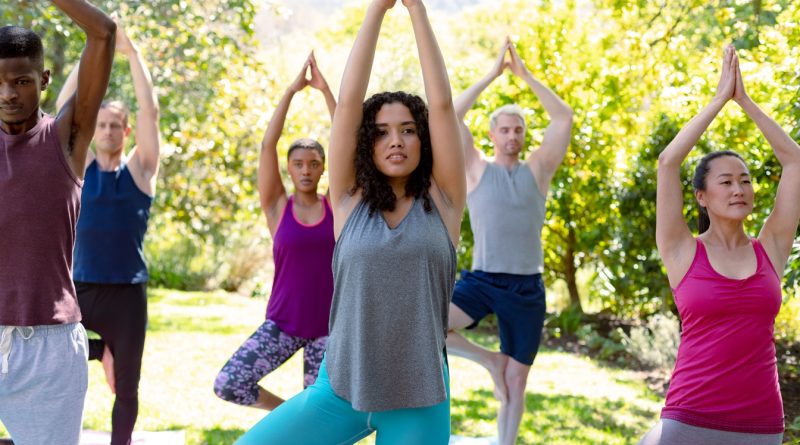Move, Stretch, Feel Great: Veins and Yoga Basics
Veins are the unsung heroes of our circulatory system, quietly working to return blood to the heart against gravity. However, factors like prolonged sitting, lack of movement, and genetics can lead to issues like varicose veins or poor circulation. While medical treatments exist, an often-overlooked solution lies in the ancient yoga practice.
Understanding Veins
Veins are crucial in our body’s circulation, carrying deoxygenated blood back to the heart. They work against gravity, aided by muscle contractions and one-way valves. When these valves weaken, blood can pool, leading to varicose veins or deep vein thrombosis (DVT). Visiting a vein doctor can always help to prevent and treat these conditions.
The Link Between Yoga and Vein Health
Yoga isn’t just about striking poses or stretching muscles; it’s a holistic practice that can benefit our bodies in many ways. When it comes to vein health, yoga has a special role to play. This ancient practice connects with our veins and benefits them in many aspects, such as:

Corporate Wellness App
CircleCare
– Improving blood flow
– Alleviating pressure
– Stress reduction
The connection between yoga and vein health is clear. Regularly practicing yoga can improve these aspects essential for maintaining optimal vein health.
Benefits of Yoga for Veins
Yoga isn’t just a trendy workout; it’s a practice with many benefits, including some that directly impact our vein health. Let’s explore how yoga can make a difference in keeping our veins in top shape.
Improved Blood Flow and Circulation
Yoga helps blood flow better in our bodies. When we do yoga poses and breathe deeply, blood moves more easily, carrying oxygen and nutrients everywhere. This helps keep veins healthy and stops problems like varicose veins and blood clots. Try to help your blood circulate better by doing yoga regularly.
Reduced Risk of Varicose Veins and Blood Clots
Varicose veins and blood clots can be painful and harmful to our health. However, doing yoga regularly can lower the chances of having these problems. Yoga helps our blood flow better and strengthens our muscles, which stops blood from getting stuck in our veins. This reduces the risk of varicose veins and blood clots.
Stress Reduction and Inflammation
Stress and inflammation can harm our veins. Stress tightens blood vessels, slowing blood flow, and inflammation can damage veins. But yoga helps by:
– Calming us down
– Making us more aware
– Breathing deeply
This helps reduce stress and inflammation, making our veins healthier.
Promotes Well-Being
Besides directly helping vein health, yoga also boosts overall well-being, indirectly benefiting veins. Regularly doing yoga has been linked to:
– Better mental health
– Improved sleep
– More energy
All of which are important for keeping veins working well. So, by looking after our overall health with yoga, we also reduce inflammation in our veins.
Yoga Basics
With all its complex poses and terminology, yoga might seem intimidating at first glance, but at its core, it’s a simple practice that anyone can benefit from. Let’s break down some of the basic elements of yoga and why they’re important for both beginners and seasoned practitioners alike.
Breathing Techniques
One of the foundational aspects of yoga is its emphasis on deep, controlled breathing. Proper breathing techniques help us relax and focus and play a crucial role in supporting our vein health. When we take slow, deliberate breaths, we oxygenate our blood and improve circulation. So, remember to keep your breath steady and smooth whether you’re holding a challenging pose or simply sitting in stillness.
Mindfulness and Relaxation
In our busy lives, it’s hard to find peace. But that’s where yoga helps. By being mindful and using relaxation methods like meditation, we can lower stress and feel better. When we’re less stressed, our bodies and veins work better because they need a calm environment to function well. Set your environment for a calm and relaxing atmosphere to promote relaxation. This will make it easier to reduce stress.
Yoga Poses for Vein Health
When it comes to supporting vein health through yoga, certain poses can be particularly beneficial. Let’s explore some beginner-friendly yoga poses that can help improve circulation, reduce pressure on veins, and promote overall vein health.
Mountain Pose
Stand up and set your feet hip-width apart and arms relaxed by your sides. Press your feet firmly into the ground and engage your leg muscles. Lengthen the spine and reach your arms overhead, palms facing each other. Hold the pose for many breaths, feeling a gentle stretch through your entire body. Mountain Pose helps improve posture and circulation, making it an excellent choice for vein health.
Legs-Up-The-Wall Pose
Lie on your back and get your hips close to a wall. Extend your legs upward, resting them against the wall. Keep both arms relaxed by your sides and close your eyes. Hold the pose for several minutes, focusing on deep, steady breathing. Legs-Up-The-Wall Pose promotes blood flow from the legs back to the heart, reducing swelling and pressure on the veins in the lower body.
Butterfly Pose
Sit on the floor and with the soles of your feet together. Allow your knees to fall outward, creating a diamond shape with your legs. Hold your feet or ankles and sit up tall. Gently flip your knees up and down like the wings of a butterfly. Hold the pose for several breaths, feeling a gentle opening through the hips and groin. Butterfly Pose stimulates circulation in the lower body and relieves tension in the groin area.
Corpse Pose
Lie flat on your back with your arms relaxed by your sides and your legs extended. Close your eyes and allow your body to sink into the floor. Focus on releasing tension from every muscle and surrendering to gravity. Maintain this pose for several minutes, breathing deeply and letting go of any tension or stress. Corpse Pose promotes relaxation and allows blood to flow freely throughout the body, supporting overall vein health.
Incorporating Yoga into Your Routine
Now that we’ve seen some good yoga poses for vein health let’s discuss how to add yoga to your daily routine in a way that’s easy and lasts. If you’re new, start with short sessions, like 10 or 15 minutes, and focus on basic poses and breathing. As you get used to it, you can do more and make it harder. Just remember, it’s better to do a little yoga often than to overdo it and get hurt.
Make Yoga a Regular Habit
Consistency matters for getting the most out of yoga for vein health. Try to do yoga often, like a few times a week. Whether you like it in the morning to kickstart your day or in the evening to unwind, pick a time that suits you and stick with it. Making yoga a regular thing in your routine helps you stick with it and see benefits for a long time.
Conclusion
Making yoga part of your daily routine is a simple yet powerful way to support vein health. Moving, stretching, and practicing mindfulness can improve circulation, reduce the risk of vein-related issues, and enhance overall well-being. So, set your mat, strike a pose, and feel the difference yoga can make for your veins and your life.








